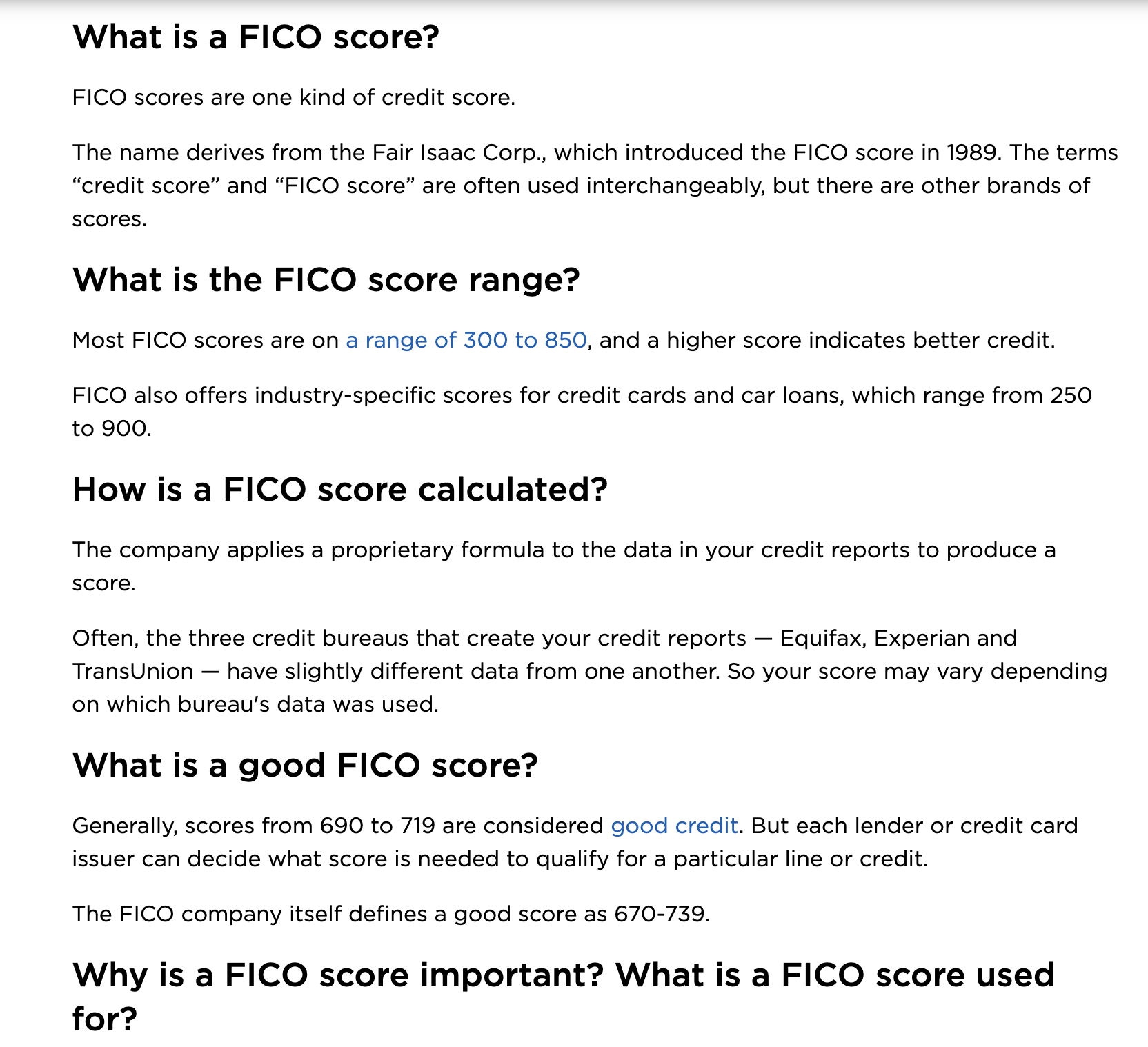Article's Content
$2.9 trillion.
That’s how much Apple is currently worth.
Now, let’s imagine a scenario where you invested $1,000 in Apple stock back in 1999 and held onto it until 2022. Can you guess how much that investment would be worth today?
Brace yourself:
More than $695,000! That’s a whopping 695 times growth!
And it’s not just Apple.
Other companies like Amazon, Microsoft, and Alphabet (Google’s parent company) have also experienced significant growth. The numbers show that buying stocks from potentially successful companies and HODL (Holding On For Dear Life) ultimately pays off.

(Please note, this is not investment advice.)
But here’s the exciting part—you can apply this concept to content marketing. Everything you invest in today, from your marketing engine to the various content formats you create with it, can pay dividends in the future. Instead of viewing content marketing as an expense, consider it a valuable investment for your business.
In this post, we’ll explore why CMOs and CFOs must embrace the content investing paradigm.
Why Should CMOs and CFOs Start Thinking About Marketing Like Investing?
Many people within the C-suite still view marketing as a cost center. This is left over from the Mad Men days when it was difficult to follow the movement of customers from first engagement with a marketing asset to final conversion. But that’s no longer the case in the digital era.
As a CMO or CFO, you should think about marketing like investing because it helps you make smarter decisions and create long-term value for your company. It allows you to allocate resources wisely, analyze data for effective strategies, and focus on long-term growth. This mindset helps you adapt to changes and position your brand for sustainable long-term success.
When you think about marketing as an investment, you help your organization:
- Spend resources wisely to achieve maximum returns and long-term value
- Use data to better understand your audience, measure performance, and improve your marketing strategies
- Make decisions that focus on long-term growth and success
- Adjust your marketing strategy based on market changes so you remain competitive and succeed
Most importantly, treating marketing as an investment can help you allocate your content assets to produce the desired impact for your brand—whether it’s bringing in more qualified leads, earning more demo signups, or reducing customer acquisition costs.
Warren Buffet is renowned for coining the term economic moat. This refers to how a company uses its resources to build and maintain an advantage over its competitors. Marketing isn’t typically thought of as a key contributor to strategic advantage, but it can be leveraged for everything from advertising and brand to network effects and company culture.

Every piece of content you create, whether landing pages, blog posts, case studies, social media content, or digital PR, is an investment in building your brand and attracting and connecting with your audience. For instance, many SaaS brands have achieved Unicorn status on the back of extensive SEO moats that capture high-value or high-volume target keywords.
How Leading SaaS Brands Win by Investing in Marketing Content
Billions of people use search engines and social media daily in their personal and professional lives. By creating high-quality content on the topics they engage with, you can earn their loyalty, establish partnerships, and drive sales. It’s a strategy used effectively by leading marketing departments across industries.
Take successful SaaS companies like Salesforce, NerdWallet, and Hootsuite, for example. They understand the power of content investment and use it to capture and maintain their market share. As a result, these brands consistently publish new content and update existing content to provide relevant and accurate answers for their audiences.
Salesforce, for instance, has built a strong SEO presence worth $8,300,000, driving an impressive 5.1 million organic sessions every month. It dominates search engine results for high-value keywords like “CRM”—capturing over 10% of its total monthly search volume.
Investing in evergreen content, as Salesforce does, improves your content marketing ROI as the benefits accumulate over time. For example, Salesforce created a post in 2016 that has experienced traffic growth from two to 115,000 monthly visitors. That’s more than 5,000,000% growth in less than 10 years!
Diversifying your content through topic clusters and repurposing them for different social media platforms is another smart content investing strategy that has helped leading SaaS brands dominate their niche. Here are two great examples:
NerdWallet used the SEO topic clusters strategy to attract around 18 million monthly visitors to its site.

NerdWallet knew precisely what its audience was searching for, so it created a bunch of helpful content around those topics. The company organized it into clusters, with a pillar page for each topic plus related pages that answer different questions and provide more details.
By doing this, NerdWallet covered everything its audience needed to know at every step of the buying process. It used its detailed guides to attract the right people and become a trusted source of information. As a result, the company became the top result on Google for popular finance queries like “fico score.” Its page about FICO scores alone brings in almost $300,000 of website traffic.
What’s cool about the page is that it answers all the common questions people have about FICO scores.

Creating content around these keywords helps NerdWallet attract high-intent leads who are more likely to use the product than someone looking to get high-level knowledge about the topic.
In contrast, Hootsuite uses repurposing to extend the lifespan of its content. The Hootsuite team designed a content repurposing menu, leveraging its social reach to increase its organic traffic.
Even though Hootsuite attracts 4 million organic users, it still repurposes its content for other channels. For example, Hootsuite published this Instagram Hashtags Guide in 2016 and updated it in 2021:

Then, the team repurposed the long-form asset into this six-minute video for YouTube:

The video performed so well that it received 21,000 views in less than a year, and the repurposed carousel on Instagram generated more than 1,000 reactions.

What’s interesting is that Hootsuite made sure the repurposed content was short, easy to digest, and perfect for each channel. This is how the company consistently serves fresh, engaging content to its audience.
Repurposing content like this saves it from starting from scratch each time and makes it easier for the company to scale its content across different platforms. Getting the right fit between the content and the channel—adapting existing content to suit the specific distribution channel—increases its chances of success on different channels and ensures the content resonates with its audience, wherever they are.
Repurposing content is a marketing investment strategy similar to another process that CFOs are familiar with—leveraging existing assets to quickly build up strategic positions in other areas.
What Risks Should CMOs and CFOs Consider When Viewing Marketing as an Investment?
When you view marketing as an investment, it isn’t all upsides. Just like with any investment strategy, there are some risks.
Here are some of the leading marketing investment risks that the C-Suite should keep in mind:
- Uncertainty about your return on investment (ROI): Your marketing initiatives may not deliver the expected financial returns.
- Market volatility: Changes in market conditions can impact the effectiveness of your marketing campaigns.
- Uncertain consumer response: Consumers may not respond positively to your marketing efforts, affecting sales and brand perception.
- Budget allocation risks: Allocating a significant budget to marketing may create imbalances and cause you to miss other opportunities.
- Competitive pressure: Intensified marketing efforts by competitors can make it difficult for your brand to stand out.
- Technology and platform risks: Your reliance on specific marketing platforms may be affected by algorithm changes, privacy concerns, or technical issues.
- Compliance and legal issues: Non-compliance with advertising regulations and privacy laws can lead to penalties and reputational damage.
- Reputation and brand risks: Poorly executed or controversial campaigns can harm your company’s reputation and erode trust.
- Measurement and attribution challenges: Accurately measuring the impact of your marketing and attributing results to specific campaigns can be difficult.
- Evolving consumer preferences: Failing to adapt your marketing strategies to changing consumer trends can render your investments less effective.
Despite the risks, both parties can make things work by regularly discussing marketing strategies, goals, and financial implications, collaborating on marketing and financial planning to align budgets and resources, and reviewing marketing initiatives and their economic outcomes to learn and improve.
Strategies for Evaluating the Success of Content Marketing Investments
In the same way that CMOs, CFOs, and CEOs need to agree on the top risks of content investment, it’s important to operationalize a definition of success. These key stakeholders should agree on standard metrics to evaluate marketing performance and its financial impact.
Particularly, you should find your North Star metric: the one measurement that is most predictive of your company’s long-term success.
For the CMO at a product-led company, the North Star metric might boil down to something like freemium conversions or free-trial signups. However, the CFO at that same company will likely be more interested in the percentage of these signups that become paying customers.
These key metrics shouldn’t live separately from one another. CMOs and CFOs need to collaborate on methods for defining, measuring, and evaluating success. Some examples of ways to measure the success of marketing investments are:
- Return on investment (ROI): You calculate how much money you earn compared to what you spend on marketing. The ROI shows whether your marketing efforts were profitable.
- Key performance indicators (KPIs): You choose specific metrics, like customer acquisition costs or revenue growth, to track progress and see if your marketing results are moving you closer to your goals.
- Attribution analysis: You use data and analytics to figure out which marketing activities lead to more sales or conversions. The data helps you understand what is working and what needs improvement.
- Marketing mix modeling: You analyze different marketing channels to see which ones impact overall success the most. This helps you decide where to invest resources for the best results.
- Customer surveys and feedback: You ask customers for their opinions and experiences to see if your marketing efforts make them happy and influence their decisions. This feedback helps you understand your marketing’s effectiveness and customer satisfaction.
You can use these insights to make informed decisions and track your marketing ROI.
Treat Content as an Investment, Not an Expense
When it comes to investing, the key is to think long term and not expect quick riches. It requires some knowledge, patience, and calculated risk. You can apply these same principles to marketing decisions. If you think like an investor, you can excel in your business’s marketing efforts, whether you’re a CMO or CFO.
To treat marketing as an investment, you can take the following steps:
- Set clear goals: Define specific and measurable marketing objectives that align with your overall business goals.
- Spend money wisely: Allocate resources to marketing initiatives based on their potential to bring returns and support business growth.
- Understand the market: Conduct research to know your target audience, market trends, and competitors. Use this information to make intelligent marketing decisions.
- Plan and measure: Create clear marketing plans with timelines and ways to measure success and ROI.
- Test and improve: Try different marketing approaches, channels, and messages. Learn from the results and make changes to improve effectiveness.
- Use data and analytics: Make decisions based on data and insights about consumer behavior, campaign performance, and results.
- Embrace technology: Adopt marketing tools and technologies that improve efficiency, targeting, and measurement. Stay open to new trends and adapt accordingly.
- Collaborate with other departments: Work with finance and other departments to align strategies, share insights, and ensure marketing investments support overall business goals.
- Monitor and adjust: Keep an eye on marketing performance, identify areas for improvement, and make changes based on market conditions and customer feedback.
- Focus on long-term value: Balance short-term results with building a strong brand and customer loyalty. Consider the long-term value of customers when evaluating marketing investments.
Treating content marketing as an investment is a game-changer for businesses. It’s all about shifting your perspective and recognizing the long-term benefits and returns that content can bring. Instead of viewing content as a one-time expense, see it as a valuable asset that can continue to deliver value for years to come.







